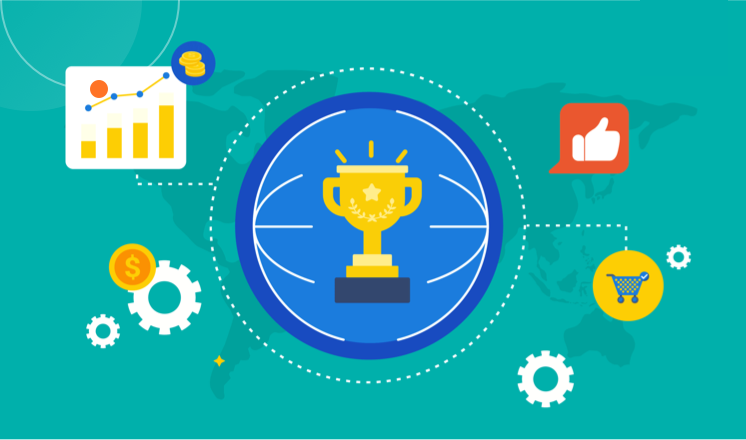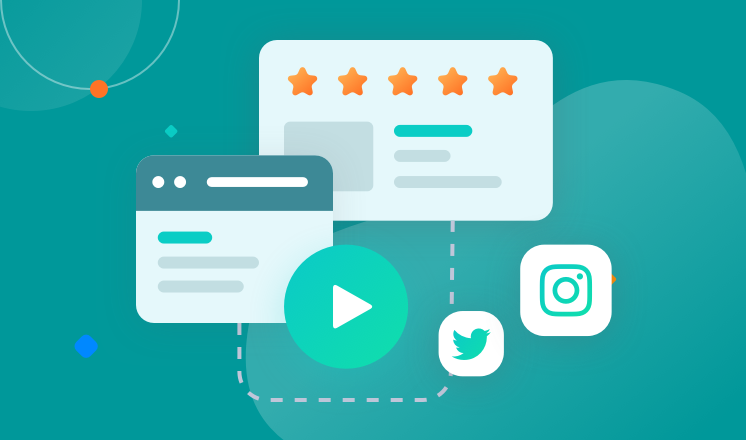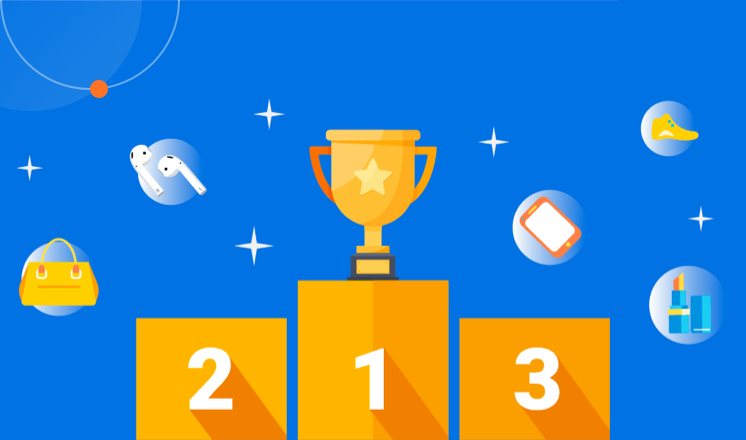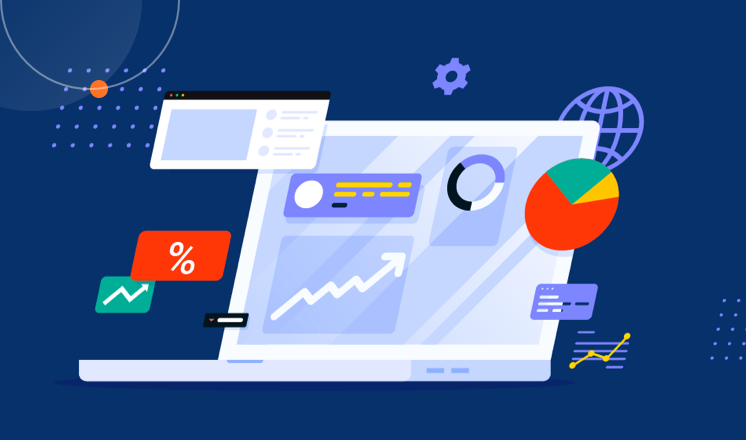
I. Introduction
1. Someone may consider scraping data from LinkedIn for several reasons:
a) Lead generation: Scrape data from LinkedIn allows businesses and individuals to gather valuable contact information of potential leads, such as their names, job titles, companies, and email addresses. This data can be used for targeted marketing campaigns, networking, and business development.
b) Market research: Scraping data from LinkedIn can provide insights into market trends, competitor analysis, and industry insights. By analyzing information such as job postings, company profiles, and employee data, businesses can make informed decisions and stay ahead in their respective markets.
c) Recruitment: Recruiters can use scraped data to identify potential candidates based on their skill sets, experience, education, and other relevant criteria. This can save time and effort in the recruitment process by narrowing down suitable candidates before reaching out to them.
2. The primary purpose behind the decision to scrape data from LinkedIn is to gather valuable information for various business purposes. This includes lead generation, market research, recruitment, and other data-driven activities. By extracting data from LinkedIn, businesses and individuals can gain a competitive edge, enhance their marketing strategies, and make informed decisions based on reliable and up-to-date information.
II. Types of Proxy Servers
1. The main types of proxy servers available for scraping data from LinkedIn include:
a) Dedicated Proxies: These are proxy servers that are exclusively assigned to a single user or client. Dedicated proxies offer high levels of anonymity and reliability, as they are not shared with other users. They are ideal for individuals or businesses that require a consistent and secure connection for scraping data from LinkedIn.
b) Residential Proxies: Residential proxies are IP addresses provided by Internet Service Providers (ISPs) to homeowners. These proxies appear as regular residential IP addresses, making them more difficult to detect and block. Residential proxies are suitable for LinkedIn scraping as they mimic real user behavior and can rotate IP addresses to avoid being detected as a scraping bot.
c) Datacenter Proxies: Datacenter proxies are IP addresses that are obtained from data centers and not associated with any specific ISP or location. These proxies are typically faster and more affordable than residential proxies. However, they are more likely to be detected and blocked by websites like LinkedIn due to their lack of authentic residential IP addresses.
2. These different proxy types cater to specific needs of individuals or businesses looking to scrape data from LinkedIn in the following ways:
- Dedicated Proxies: Individuals or businesses that require a high level of anonymity and reliability while scraping data from LinkedIn can benefit from dedicated proxies. Since they are not shared with other users, dedicated proxies offer more control over IP addresses and ensure consistent and uninterrupted scraping.
- Residential Proxies: LinkedIn has strict anti-scraping measures in place, and residential proxies can help bypass these restrictions. By using real residential IP addresses, these proxies mimic human behavior and make it difficult for LinkedIn to detect and block scraping activities. Residential proxies are ideal for businesses that need to scrape large amounts of data without being detected.
- Datacenter Proxies: Datacenter proxies are a cost-effective option for scraping data from LinkedIn. They offer high speeds and scalability, making them suitable for businesses that require fast and efficient scraping. However, it's important to note that datacenter proxies are more likely to be detected and blocked by LinkedIn, so additional precautions may need to be taken.
Overall, the choice of proxy type depends on the specific needs and priorities of the individual or business conducting LinkedIn scraping. Factors such as budget, level of anonymity required, and the scale of scraping operations will influence the selection of the appropriate proxy type.
III. Considerations Before Use
1. Factors to consider before scraping data from LinkedIn:
a) Legal and ethical implications: Ensure that scraping LinkedIn data aligns with LinkedIn's terms of service and any applicable laws or regulations.
b) Purpose of scraping: Clearly define the purpose for scraping LinkedIn data. Are you looking to gather market insights, build a business directory, or perform competitor analysis? Understanding your goals will help guide your scraping efforts.
c) Data usage and privacy: Be mindful of how you plan to use the scraped data. Ensure that you handle and store the data in a secure manner and comply with data protection regulations.
d) Technical considerations: Evaluate the technical feasibility of scraping LinkedIn data. Consider the complexity of the data structure, the amount of data you need, and the available tools and resources to perform the scraping.
e) Potential limitations and risks: Understand the limitations and risks associated with scraping LinkedIn data, such as potential IP blocking, changes in LinkedIn's website structure, and the risk of legal consequences if scraping is done improperly.
2. Assessing needs and budget for scraping LinkedIn data:
a) Determine your data requirements: Clearly define the specific data you need from LinkedIn. This could include information like profiles, job listings, company information, or connections. Understanding your data requirements will help you determine the scope and complexity of your scraping project.
b) Evaluate technical resources: Assess the technical resources available to you, such as the required software, programming skills, or access to scraping tools. If you lack the necessary technical expertise, consider outsourcing the scraping task to professionals or using pre-built scraping solutions.
c) Consider budget constraints: Determine your budget for scraping LinkedIn data. This will depend on factors such as the complexity of the scraping project, the amount of data you need, and any additional services or tools required. Research the cost of scraping tools or services to help estimate your budget.
d) Risk assessment: Consider the potential risks and costs associated with scraping LinkedIn data. This includes the possibility of IP blocking, legal consequences, and the potential need for ongoing maintenance and updates to keep up with changes on LinkedIn's website.
e) Prioritize data quality vs. quantity: Balance your needs and budget by prioritizing data quality versus quantity. Determine the minimum amount and quality of data required to achieve your goals, as excessive scraping can lead to increased costs and potential legal risks.
By carefully considering these factors and assessing your needs and budget, you can make an informed decision about scraping data from LinkedIn and plan accordingly.
IV. Choosing a Provider
1. When selecting a reputable provider for scraping data from LinkedIn, there are a few key factors to consider:
a) Reputation: Look for providers with positive customer reviews and a track record of delivering reliable and accurate data scraping services.
b) Expertise: Choose a provider with experience and expertise specifically in scraping data from LinkedIn. They should have a deep understanding of LinkedIn's structure and any technical challenges involved in scraping the data.
c) Compliance with LinkedIn's Terms of Service: Ensure that the provider follows LinkedIn's terms and conditions for data scraping. This includes respecting LinkedIn's limitations on data usage and user privacy.
d) Data Quality: Verify that the provider ensures data accuracy and provides clean, usable data that meets your specific requirements.
e) Customer Support: Consider providers who offer excellent customer support, as you may need assistance or guidance throughout the data scraping process.
2. There are several providers that offer services designed for individuals or businesses looking to scrape data from LinkedIn. Some popular providers include:
a) Octoparse: Octoparse offers a user-friendly web scraping tool that allows users to extract data from LinkedIn and other websites without any coding knowledge.
b) Scrapinghub: Scrapinghub provides professional web scraping services, including LinkedIn data scraping. They offer both custom scraping solutions and pre-built LinkedIn scraping bots.
c) ParseHub: ParseHub is a visual web scraping tool that enables users to scrape data from LinkedIn by simply clicking and selecting the desired information.
d) Apify: Apify is a platform that provides automated web scraping services, including LinkedIn scraping. It offers a range of features and tools for scraping LinkedIn data efficiently.
Remember to thoroughly research and compare different providers to find the one that best suits your needs and budget.
V. Setup and Configuration
1. Setting up and configuring a proxy server for scraping data from LinkedIn involves the following steps:
Step 1: Choose a reliable proxy provider: Look for a reputable proxy provider that offers residential proxies, as they are more reliable and mimic real user connections.
Step 2: Purchase proxy IP addresses: Once you have chosen a provider, you need to purchase a sufficient number of proxy IP addresses to handle your scraping requirements. Make sure to select proxies from different locations to avoid suspicion.
Step 3: Configure the proxy server: The exact steps for configuring the proxy server depend on the software or tool you are using for scraping. Generally, you need to enter the proxy IP addresses, port numbers, and authentication details (if any) in the scraping software settings.
Step 4: Test the proxy connection: Before starting the scraping process, ensure that the proxy server is working correctly. Test the connection by accessing a website through the proxy and verifying that the IP address and location are different from your own.
Step 5: Rotate or manage proxy IP rotation: To avoid detection and potential IP blocking by LinkedIn, it is recommended to rotate the proxy IP addresses periodically during the scraping process. You can either manually change the IP addresses or use proxy management software that automatically rotates the IPs.
2. Common setup issues when scraping data from LinkedIn and their resolutions:
Issue 1: IP blocking: LinkedIn has measures in place to detect and block suspicious scraping activities. If you encounter IP blocking, try the following solutions:
- Use residential proxies: Residential proxies mimic real user connections and are less likely to be blocked.
- Rotate proxies: Continuously rotate the proxy IP addresses to avoid detection.
- Limit scraping speed: Reduce the scraping speed to simulate human-like behavior and avoid triggering IP blocking.
Issue 2: Captchas and bot detection: LinkedIn may present captchas or block access if it detects scraping activity. To overcome this, you can:
- Use anti-captcha services: Employ services that automatically solve captchas for you.
- Implement headless browsing: Use browser automation tools that can mimic human interaction and bypass bot detection.
Issue 3: Account suspension: LinkedIn strictly enforces its terms of service, and scraping data may violate those terms. To prevent account suspension:
- Create multiple LinkedIn accounts: Distribute the scraping workload across multiple accounts to avoid excessive activity on a single account.
- Use dedicated scraping accounts: Separate your scraping activities from your personal or business LinkedIn account.
It is important to note that while these solutions can help mitigate setup issues, scraping data from LinkedIn may still have legal and ethical implications. Ensure you comply with LinkedIn's terms of service and respect user privacy when using scraping techniques.
VI. Security and Anonymity
1. When it comes to online security and anonymity, scraping data from LinkedIn can play a crucial role. By scraping data, individuals or organizations can gather information about potential threats or fraudulent activities. This data can be used to identify suspicious profiles, fake accounts, or scams, thus contributing to online security. Moreover, scraping data can help uncover patterns and trends, which can aid in detecting and preventing cybercrime.
In terms of anonymity, scraping data from LinkedIn allows users to gather information without directly interacting with the platform or leaving digital footprints. This can help maintain anonymity and reduce the risk of being traced back to the data collector.
2. To ensure your security and anonymity when scraping data from LinkedIn, it is important to follow certain best practices:
a. Respect LinkedIn's terms of service: Familiarize yourself with LinkedIn's terms of service and ensure you are adhering to them. This includes not violating any usage restrictions or scraping limitations set by the platform.
b. Use reputable scraping tools: Choose reliable and reputable scraping tools or software that prioritize data security and privacy. Make sure the tool you use has robust security measures in place to protect your own data and prevent any unauthorized access.
c. Proxy servers: Employ the use of proxy servers to mask your IP address and location. This can help protect your identity and ensure the data scraping process remains anonymous.
d. Limit data collection: Only collect the necessary data and avoid scraping excessive or sensitive information. This can help minimize any potential legal or ethical concerns associated with data scraping.
e. Data storage and protection: Once you have scraped the data, ensure it is stored securely. Implement proper data encryption, access controls, and backup procedures to safeguard the collected information.
f. Regularly update security measures: Stay informed about the latest security practices and update your scraping tools and security measures accordingly. This will help mitigate any vulnerabilities and protect your own security and anonymity.
By adhering to these practices, individuals can scrape data from LinkedIn while ensuring their own security and anonymity. However, it is important to note that scraping data from LinkedIn should be done responsibly and within legal and ethical boundaries.
VII. Benefits of Owning a Proxy Server
1. The key benefits that individuals or businesses can expect to receive when they scrape data from LinkedIn include:
a) Lead Generation: LinkedIn scraping allows businesses to gather valuable contact information of potential leads, such as names, job titles, company names, and email addresses. This data can be used for targeted marketing campaigns or building a database of potential clients.
b) Market Research: Scraping LinkedIn data can provide insights into industry trends, competitor analysis, and market research. By analyzing profiles and connections, businesses can gain a better understanding of their target audience and make informed decisions.
c) Recruitment and Talent Acquisition: LinkedIn scraping can be beneficial for recruiting purposes, as it enables businesses to find qualified candidates based on specific criteria, such as job titles, skills, and locations. This helps streamline the hiring process and saves time and resources.
d) Networking and Relationship Building: Scrape data from LinkedIn can help individuals or businesses expand their professional network by identifying and connecting with relevant industry professionals, potential clients, or partners.
2. Scrape data from LinkedIn can be advantageous for personal or business purposes in the following ways:
a) Competitive Advantage: By gathering information about competitors, their employees, and their connections, businesses can gain a competitive edge by identifying new opportunities, partnerships, or market gaps.
b) Personal Branding: Individuals can use LinkedIn scraping to analyze successful professionals in their field and learn from their profiles. This can help in shaping their own personal brand and understanding the skills and experiences that are valued in their industry.
c) Sales and Marketing: Scraping LinkedIn data can provide businesses with valuable leads and contact information for their sales and marketing efforts. They can reach out to potential clients directly or use the data for targeted advertising campaigns.
d) Business Development: By analyzing LinkedIn connections, businesses can identify potential partnerships or collaborations that can help them expand their reach or enter new markets.
e) Job Hunting: Individuals can use LinkedIn scraping to identify job opportunities, analyze the requirements of specific roles, and connect with hiring managers or recruiters.
Overall, scrape data from LinkedIn can provide individuals and businesses with valuable insights, leads, and opportunities that can enhance their personal or professional growth.
VIII. Potential Drawbacks and Risks
1. Potential Limitations and Risks:
a) Legal Issues: Scraping data from LinkedIn can potentially infringe on LinkedIn's terms of service, which prohibits the automated collection of data from its platform. Violating these terms may lead to legal consequences.
b) Quality of Data: Scrape data may not always be accurate or up-to-date. Profiles may contain outdated information or inaccuracies that can affect the reliability of the scraped data.
c) Privacy Concerns: Scraping personal information from LinkedIn profiles without the consent of the individuals can raise privacy concerns. This can result in negative publicity and damage the reputation of the organization involved in scraping.
d) IP Blocking: LinkedIn has mechanisms in place to detect and block scraping activities. Excessive or suspicious scraping can trigger IP blocking, preventing further access to LinkedIn.
2. Minimizing or Managing Risks:
a) Compliance with LinkedIn's Terms of Service: It is crucial to review and comply with LinkedIn's terms of service before conducting any scraping activities. This includes obtaining explicit consent from LinkedIn and its users for data collection.
b) Data Verification and Cleaning: Validate and clean the scraped data to ensure its accuracy and reliability. This can involve cross-referencing the scraped data with other reliable sources or performing data validation checks.
c) Ethical Data Use: Ensure that the scraped data is used for legitimate purposes and in compliance with applicable data protection and privacy laws. Use the data responsibly and respect the privacy rights of the individuals involved.
d) IP Rotation and Proxies: To avoid IP blocking, consider rotating IP addresses or using proxies to make scraping activities appear more natural and less suspicious to LinkedIn's detection mechanisms.
e) Monitoring and Compliance Tools: Utilize monitoring and compliance tools that can help track scraping activities and ensure adherence to legal and ethical guidelines. These tools can help mitigate risks by providing alerts and monitoring any suspicious behavior.
f) Consult Legal Experts: Seek advice from legal experts who specialize in data scraping to ensure compliance with relevant laws and regulations. They can provide guidance on the legal and ethical aspects of scraping data from LinkedIn.
By following these measures, organizations can minimize the risks associated with scraping data from LinkedIn, ensuring legal compliance, data accuracy, and ethical data use.
IX. Legal and Ethical Considerations
1. Legal Responsibilities:
When scraping data from LinkedIn, it is important to comply with legal responsibilities to avoid any violations. These responsibilities include:
a) Terms of Service: LinkedIn has specific terms of service that users must adhere to, which may restrict the scraping or automated collection of data. It is essential to review and understand these terms to ensure compliance.
b) Copyright and Intellectual Property: LinkedIn's data is protected by copyright and intellectual property laws. Scraping data without proper authorization may infringe upon these rights. Ensure that you have the necessary permissions or are scraping data that is publicly available.
c) Data Protection and Privacy Laws: Depending on the jurisdiction, data protection and privacy laws may apply to the scraping of personal information from LinkedIn profiles. Ensure that you are complying with applicable laws, such as obtaining consent and protecting personal data.
2. Ethical Considerations:
In addition to legal responsibilities, ethical considerations should also guide the scraping process. Here are some ways to ensure ethical scraping of data from LinkedIn:
a) Transparency: Be transparent about the scraping process and the purpose for which the data will be used. Clearly communicate and obtain consent from individuals whose data you are scraping.
b) Data Security: Ensure that the scraped data is stored securely and protected from unauthorized access. Implement appropriate measures to safeguard the privacy and confidentiality of the scraped data.
c) Fair Use: Use the scraped data in a fair and responsible manner. Avoid using the data for malicious purposes, such as spamming or harassment. Respect the rights and privacy of individuals whose data you are scraping.
d) Minimize Impact: Minimize the impact on LinkedIn's servers and infrastructure by adhering to scraping best practices. Avoid overloading the website with excessive requests or causing disruptions to other users.
By following these legal responsibilities and ethical considerations, you can scrape data from LinkedIn in a manner that is both lawful and respectful of privacy and data protection principles.
X. Maintenance and Optimization
1. Maintenance and optimization steps for a proxy server after scraping data from LinkedIn may include:
a) Regularly updating and patching the proxy server software to ensure it has the latest security fixes and performance improvements.
b) Monitoring server logs to identify any potential issues or errors that need attention. This can help identify performance bottlenecks or any misconfigurations that may impact the proxy server's operation.
c) Optimizing proxy server settings, such as adjusting connection limits, timeouts, and caching policies, based on the expected traffic patterns and usage requirements.
d) Implementing load balancing techniques if the traffic volume is high or if there are multiple proxy servers to ensure optimal distribution and availability.
e) Regularly monitoring resource utilization, such as CPU, memory, and disk space, to ensure the proxy server has enough capacity to handle incoming requests and data storage requirements.
f) Implementing security measures, such as regularly updating SSL certificates and configuring proper access controls, to protect the proxy server from unauthorized access and potential security threats.
g) Keeping up-to-date with LinkedIn's terms of service and any changes to their scraping policies to ensure compliance and avoid potential legal issues.
2. To enhance the speed and reliability of a proxy server after scraping data from LinkedIn, you can consider the following:
a) Use a high-performance server with ample resources, such as CPU, memory, and storage, to handle the incoming requests and data processing efficiently.
b) Optimize network connectivity by ensuring low latency and high bandwidth connections to LinkedIn and other relevant websites or services.
c) Implement caching mechanisms to store frequently accessed data locally, reducing the need to fetch it repeatedly from LinkedIn's servers and improving response times.
d) Utilize content delivery networks (CDNs) to distribute static content and offload bandwidth-intensive tasks, further enhancing the server's performance and reliability.
e) Implement load balancing techniques to distribute incoming requests across multiple proxy servers, ensuring that the load is evenly distributed and preventing any single server from becoming overloaded.
f) Regularly monitor and analyze server performance metrics to identify potential bottlenecks or areas for improvement. This can include monitoring response times, error rates, and resource utilization.
g) Consider implementing caching proxies or reverse proxies to serve static content directly from cache, reducing the load on the proxy server.
h) Implementing proper error handling and failover mechanisms to ensure uninterrupted service in case of server failures or network disruptions.
i) Continuously evaluate and optimize the proxy server's configuration and settings based on observed performance and usage patterns to ensure optimal speed and reliability.
XI. Real-World Use Cases
1. Proxy servers are widely used in various industries and situations after scraping data from LinkedIn for the following reasons:
a) Market Research: Companies rely on LinkedIn data to gather insights about their target audience, competitors, and industry trends. Proxy servers allow them to gather data without raising suspicion or being blocked by LinkedIn's security systems.
b) Sales and Lead Generation: Sales professionals and marketing teams often scrape LinkedIn data to identify potential leads and prospects. By using proxy servers, they can scrape data from different regions and access profiles anonymously, allowing them to expand their reach and gather more accurate data.
c) Talent Acquisition: Recruitment agencies and HR departments use LinkedIn data to find and evaluate potential candidates for job openings. Proxy servers enable them to access LinkedIn profiles from different locations, helping them find the best talent globally.
d) Social Media Analysis: Researchers and analysts scrape LinkedIn data to study social media behavior, sentiment analysis, and user preferences. The use of proxy servers ensures that data is collected from diverse geographical locations, providing a more comprehensive and accurate analysis.
2. While there may not be specific case studies or success stories related to scraping data from LinkedIn, numerous companies and professionals have benefited from using LinkedIn data for their business purposes. Here are a few examples:
a) Lead Generation: A digital marketing agency used LinkedIn data to identify and connect with potential clients in their target industry. By scraping data and analyzing profiles, they were able to generate a significant number of qualified leads, resulting in increased sales and revenue.
b) Competitive Analysis: A pharmaceutical company used LinkedIn data to study the profiles of their competitors' employees, especially those in research and development. This allowed them to gain insights into their competitors' strategies, hiring patterns, and expertise, helping them stay ahead in the market.
c) Talent Acquisition: A software development company used LinkedIn data to identify and recruit skilled developers from different regions. By scraping data and filtering profiles based on specific criteria, they were able to build a diverse team of talented developers, enhancing their capabilities and innovation.
These examples demonstrate how scraping data from LinkedIn, when done ethically and legally using proxy servers, can provide valuable insights and advantages for businesses across industries.
XII. Conclusion
1. People should learn from this guide that scraping data from LinkedIn can be useful for various reasons, such as market research, lead generation, competitor analysis, and recruitment. However, it is important to understand the legal and ethical implications of scraping and ensure compliance with LinkedIn's terms of service. Additionally, individuals should be aware of the potential limitations and risks associated with scraping data, such as the accuracy and freshness of the data, the impact on LinkedIn's servers, and the potential for legal consequences.
2. To ensure responsible and ethical use of a proxy server once you have scraped data from LinkedIn, it is important to follow these guidelines:
a) Respect LinkedIn's terms of service: Ensure that your scraping activities comply with LinkedIn's terms and conditions. Avoid any actions that may violate their policies or terms of use.
b) Use a reliable proxy server: Choose a proxy server that is reputable and reliable. This will help ensure that your scraping activities are secure and that your data is protected. Research and select a proxy server provider that has a good track record and offers features such as encryption and IP rotation.
c) Rotate IP addresses: By rotating your IP address regularly, you can avoid detection and potential blocking by LinkedIn. This will help maintain a smooth scraping process and reduce the chances of your scraping activities being flagged as suspicious.
d) Be mindful of scraping frequency: Avoid excessive scraping or overloading LinkedIn's servers. Implement a reasonable scraping frequency, ensuring that your actions do not negatively impact LinkedIn's infrastructure or disrupt the experience of other users.
e) Respect privacy and data protection: Scrapped data should be handled responsibly and in compliance with applicable data protection laws. Be cautious about storing or sharing personal information obtained from LinkedIn and ensure that you have the necessary legal basis for processing such data.
f) Be transparent: If you are using scraped data for any commercial or business purposes, make sure to inform individuals about how their data is being used and provide them with an opportunity to opt-out if necessary.
g) Stay informed: Keep yourself updated on any changes to LinkedIn's terms of service or policies related to scraping. Regularly review and adjust your scraping practices to ensure continued compliance.
By following these guidelines, you can ensure responsible and ethical use of a proxy server once you have scraped data from LinkedIn.



